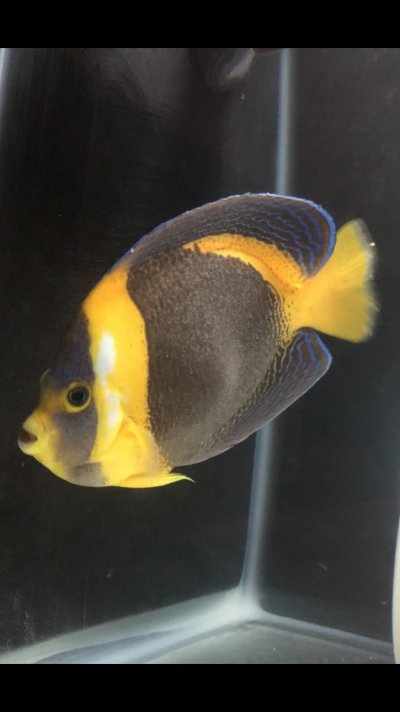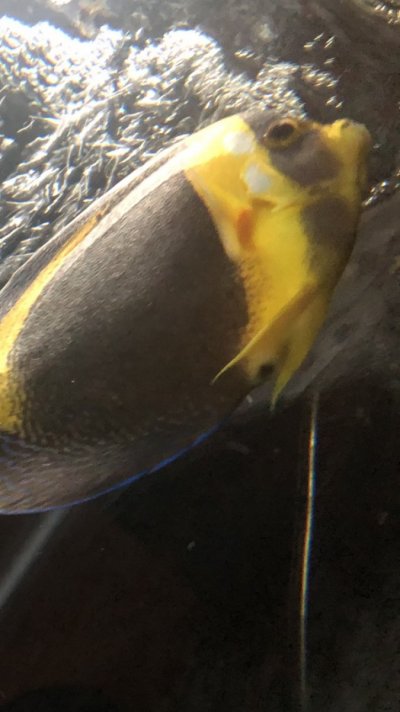Hi,
Three weeks ago I received a Scribbled Angelfish through an online dealer. I had him alone in a quarantine tank and within about a week a small white speck appeared on his pectoral fin. A few days later a few more specks appeared on his tail fin. Since it looked like Ich, I decided to follow directions for treatment I found in an online article.
I elevated the temp of the tank to 80 degrees and reduced the salinity to 1.009 specific gravity. After two weeks, the next step is to treat the tank at half strength with Copper Power while maintaining the 1.009 salinity for another week. I am currently 9 days into treatment, hyposalinity only, and there are about 12 specks now on the fish. If this is Ich, should the lesions have begun to disappear by now?
The other problem I fear may be more dire. I have not detected any poop in the tank since I acquired this fish 3 weeks ago. The absence is obvious as he is the lone fish in sandless bottom tank. He has been eating well up until today, feeding primarily on chopped scallops, squid, shrimp, and pellets. His behavior is now changing as he is not swimming around as much and has not eaten for the last 24 hours. There may be evidence of blockage at the anus as I noticed today that it has opened to about 3 mm in diameter.
Any advice is greatly appreciated.
Thank you
Other parameters:
5 1/2 inch fish
30 gallon tank
using ammonia binder daily
using buffer to keep pH above 7.5 (pH ~ 7.6)
replacing 20% of water daily


Three weeks ago I received a Scribbled Angelfish through an online dealer. I had him alone in a quarantine tank and within about a week a small white speck appeared on his pectoral fin. A few days later a few more specks appeared on his tail fin. Since it looked like Ich, I decided to follow directions for treatment I found in an online article.
I elevated the temp of the tank to 80 degrees and reduced the salinity to 1.009 specific gravity. After two weeks, the next step is to treat the tank at half strength with Copper Power while maintaining the 1.009 salinity for another week. I am currently 9 days into treatment, hyposalinity only, and there are about 12 specks now on the fish. If this is Ich, should the lesions have begun to disappear by now?
The other problem I fear may be more dire. I have not detected any poop in the tank since I acquired this fish 3 weeks ago. The absence is obvious as he is the lone fish in sandless bottom tank. He has been eating well up until today, feeding primarily on chopped scallops, squid, shrimp, and pellets. His behavior is now changing as he is not swimming around as much and has not eaten for the last 24 hours. There may be evidence of blockage at the anus as I noticed today that it has opened to about 3 mm in diameter.
Any advice is greatly appreciated.
Thank you
Other parameters:
5 1/2 inch fish
30 gallon tank
using ammonia binder daily
using buffer to keep pH above 7.5 (pH ~ 7.6)
replacing 20% of water daily
















